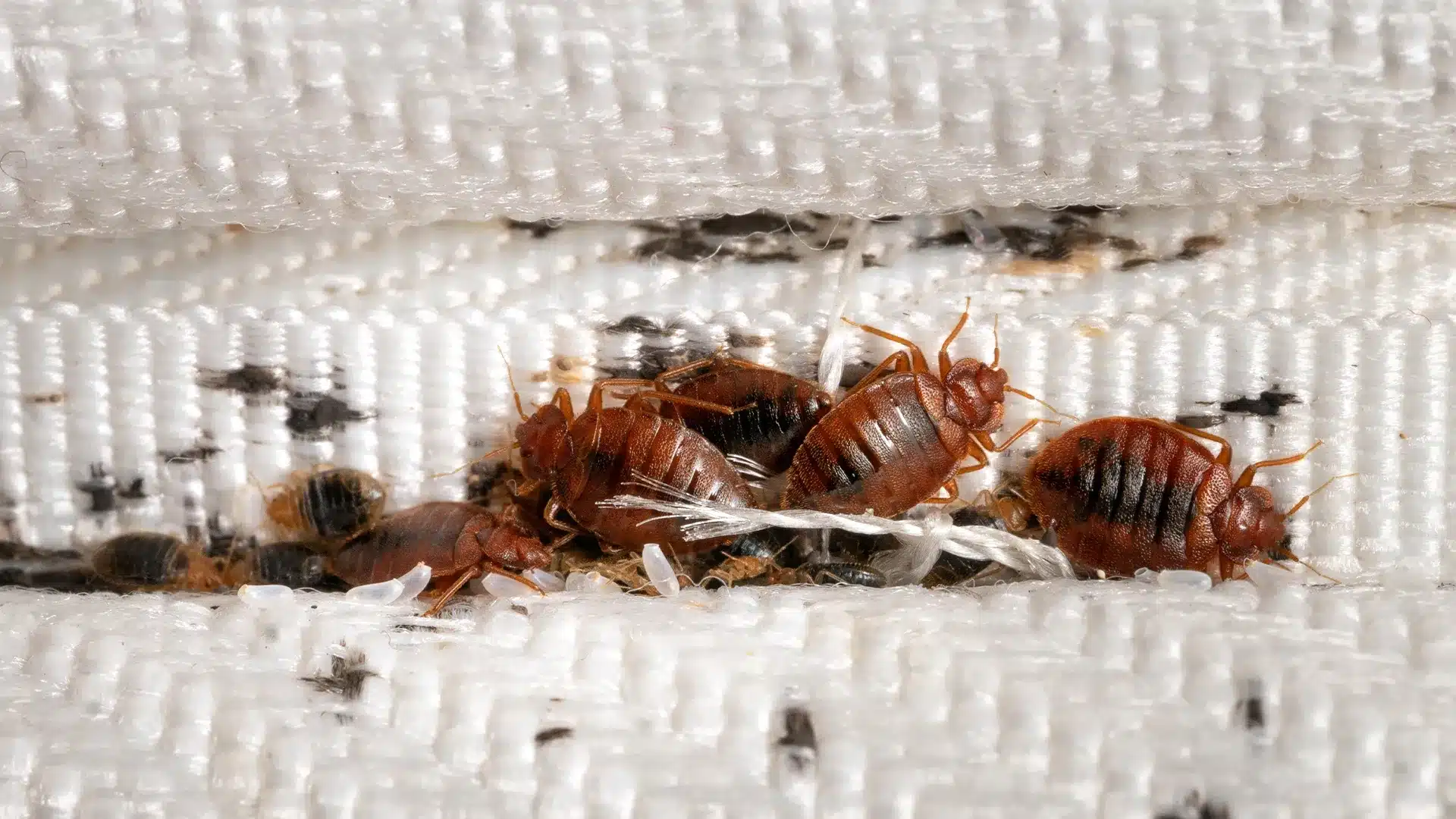Specialist Bed Bug Exterminator: DC Providers and Heat Treatment
Specialist Bed Bug Exterminator: DC Providers and Heat Treatment
Blog Article
Exploring the Scientific Research Behind Bed Bug Warm Treatments as a Lasting Bug Monitoring Method
One such approach that has actually acquired grip in recent years is the use of warmth treatments to fight bed insect infestations. The intricacies of how warmth efficiently eliminates bed insects and the broader effects for lasting parasite monitoring techniques make this a subject worth exploring further.
Bed Insect Heat Treatment Process

Thermal Death Factor for Bed Insects
Subjecting bed insects to elevated temperature levels beyond their thermal resistance variety is critical for accomplishing effective removal in heat therapy processes. The thermal fatality factor for bed bugs describes the temperature level at which these pests can not make it through. Research suggests that bed insects begin to die when revealed to temperatures over 113 ° F(45 ° C) for a continual period. As the temperature raises, so does the death price of bed insects. At around 118 ° F(48 ° C ), bed bugs begin to die quickly, with a death rate of almost 99% within mins of direct exposure. This demonstrates the level of sensitivity of bed pests to high temperatures and highlights the efficiency of heat therapies in getting rid of invasions. By getting to and keeping temperature levels over the thermal fatality point for bed pests, insect management experts can make sure detailed removal of bed bug populaces, including hard-to-reach areas where chemical therapies might be less effective. Understanding the thermal fatality point for bed insects is important for implementing successful warmth treatment methods and accomplishing sustainable parasite monitoring results.
Benefits of Warm Treatments
Having established the vital thermal death point for bed pests, it is critical to currently explore the significant benefits that heat treatments supply in properly getting rid of these durable bugs. One of the main advantages is that warmth can pass through deep right into splits and crevices where bed bugs hide, guaranteeing that even the most hard-to-reach areas are heated up to lethal temperatures.
In addition, warmth therapies are environmentally pleasant and non-toxic, making them a lasting insect monitoring approach. Unlike chemical pesticides, warmth treatments do not leave damaging deposits that can posture threats to human health and wellness or the atmosphere. This aspect is particularly vital bed bug treatment in sensitive environments such as medical facilities, schools, and suburbs where chemical use might not be preferable.
In addition, warm therapies have a high success rate in getting rid of bed pest invasions in a solitary treatment, reducing the demand for numerous visits and minimizing disruption to occupants. This efficiency not only saves time and money but likewise gives comfort to those managing bed bug issues.
Efficiency of Warm Treatment

Warm therapies have actually the included advantage of eliminating bed pest eggs, which are often resistant to conventional chemical treatments. Overall, the effectiveness of heat treatments in eradicating bed bug infestations makes them a reputable and sustainable bug monitoring strategy.
Lasting Parasite Monitoring Conveniences
Applying lasting insect management techniques supplies long-lasting benefits for both the setting and public health and wellness. By using methods such as warmth treatments for pest control, we can lower the dependence on dangerous chemical pesticides that can have unfavorable effects on ecosystems and human health and wellness - bed bug heat treatment. Sustainable parasite administration strategies assist in preserving biodiversity by targeting details insects without harming non-target microorganisms, thus keeping a balanced ecological community
Moreover, sustainable bug management methods add to the total health and wellness of the general public. By reducing direct exposure to harmful chemicals made use of in conventional bug control methods, warm treatments provide a much safer choice for insect administration in household, commercial, and public areas. This decrease in chemical usage likewise assists in preventing chemical residues from polluting soil, water, and air, guarding ecological quality.
Final Thought
Finally, bed insect warm therapies have actually been revealed to be a sustainable and efficient bug monitoring strategy. The thermal death point for bed insects makes them at risk to warmth therapies, which have numerous advantages over conventional chemical therapies. The efficiency of warm therapies in getting rid of bed insect invasions while decreasing ecological effect highlights the possibility of this approach as a lasting option for bug control.
The bed pest warm therapy procedure entails elevating the temperature level within ravaged locations to a degree that successfully removes bed insects and their eggs. By reaching and preserving temperatures above the thermal death point for bed bugs, parasite monitoring specialists can make sure detailed elimination of bed bug populations, consisting of hard-to-reach locations where chemical treatments might be much less efficient. One of the primary advantages is that warmth can pass through deep into holes and splits where bed insects conceal, making certain that also the most hard-to-reach areas are heated to dangerous temperature levels. Unlike chemical treatments that might leave behind immune populations, warmth therapies offer a safe and ecologically friendly remedy that can permeate deep into furnishings, walls, and various other hard-to-reach areas where bed insects conceal.
The thermal fatality point for bed pests makes them vulnerable to warmth therapies, which have various benefits over conventional chemical therapies.
Report this page